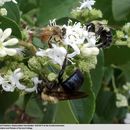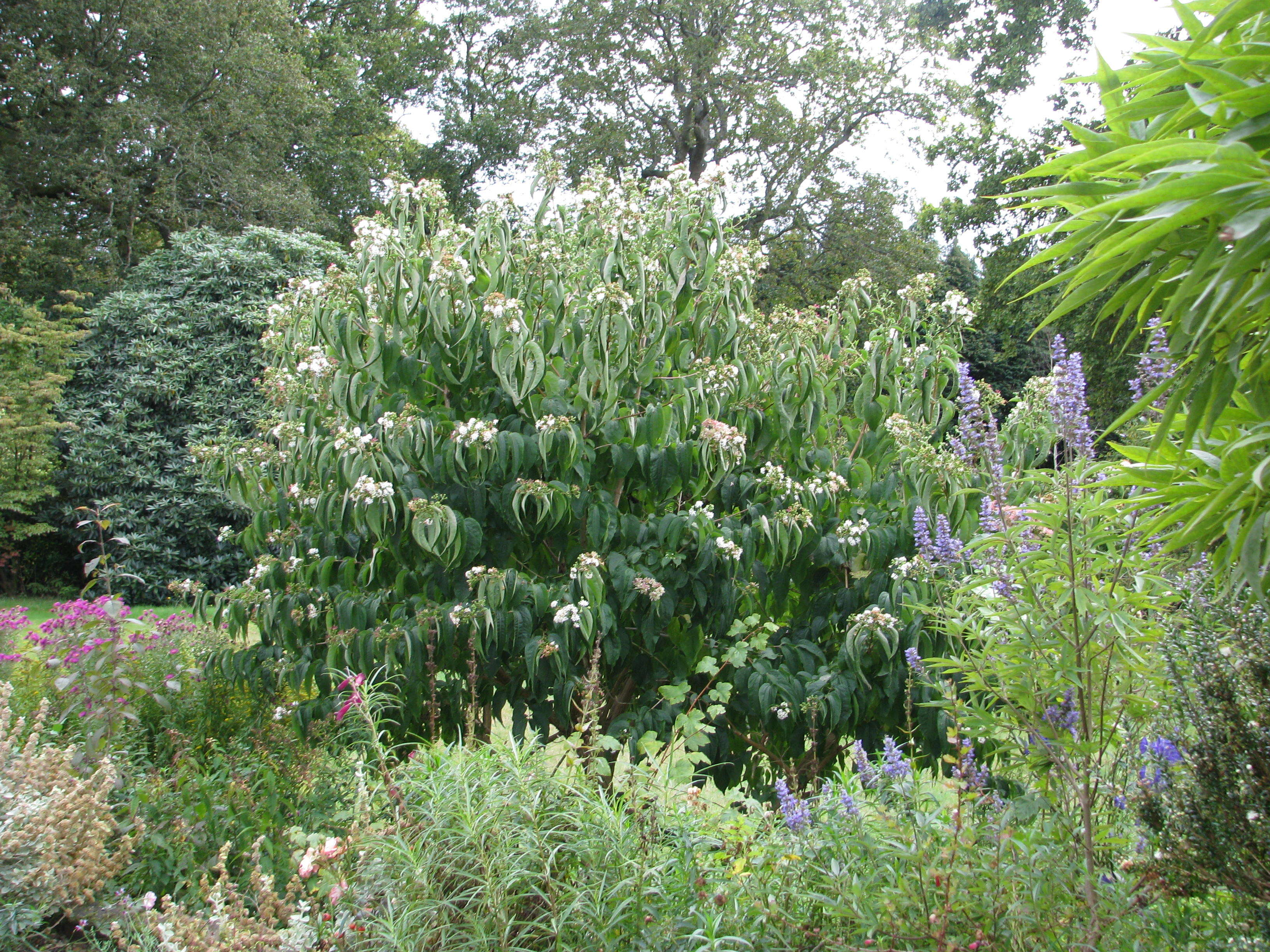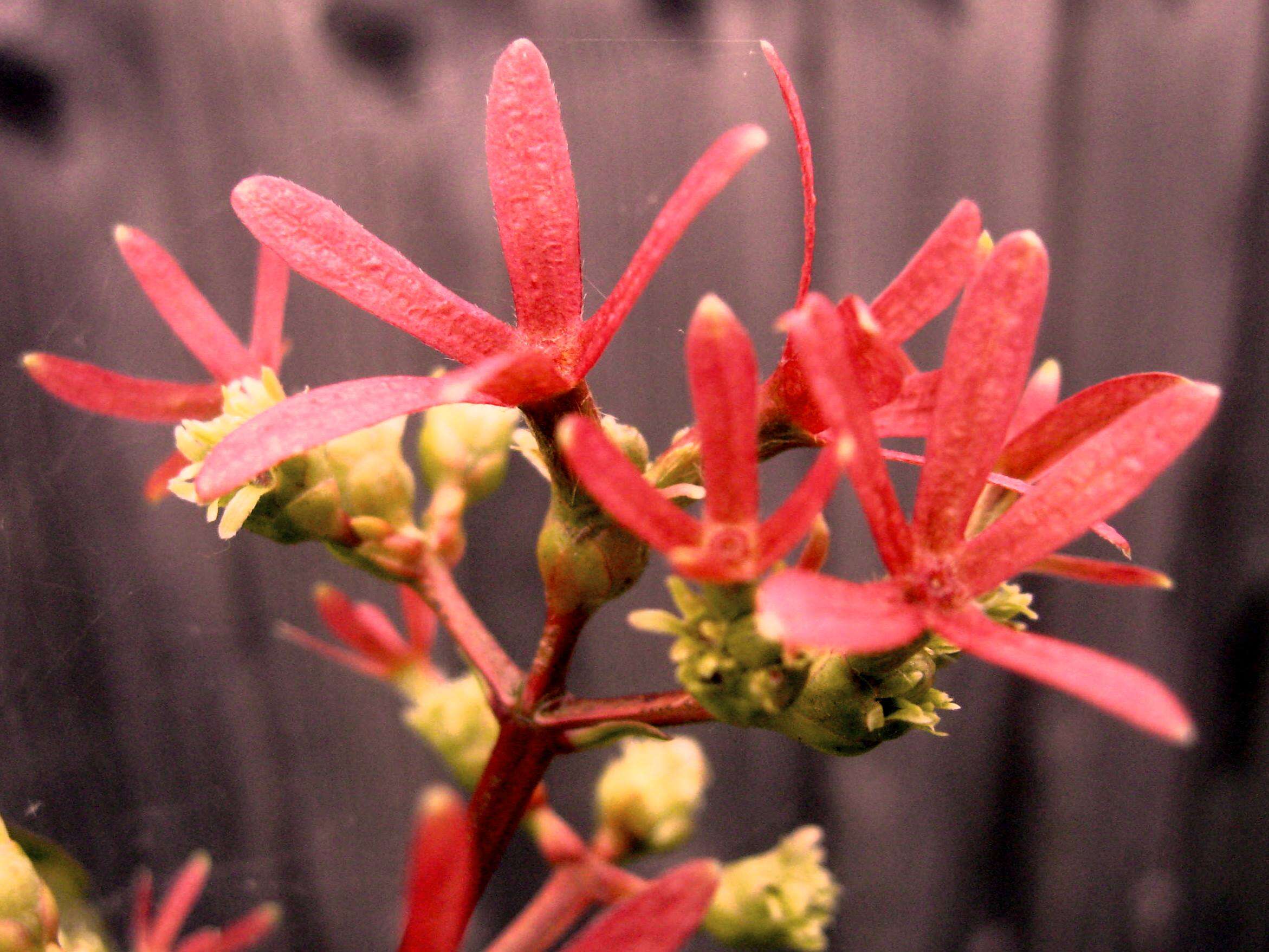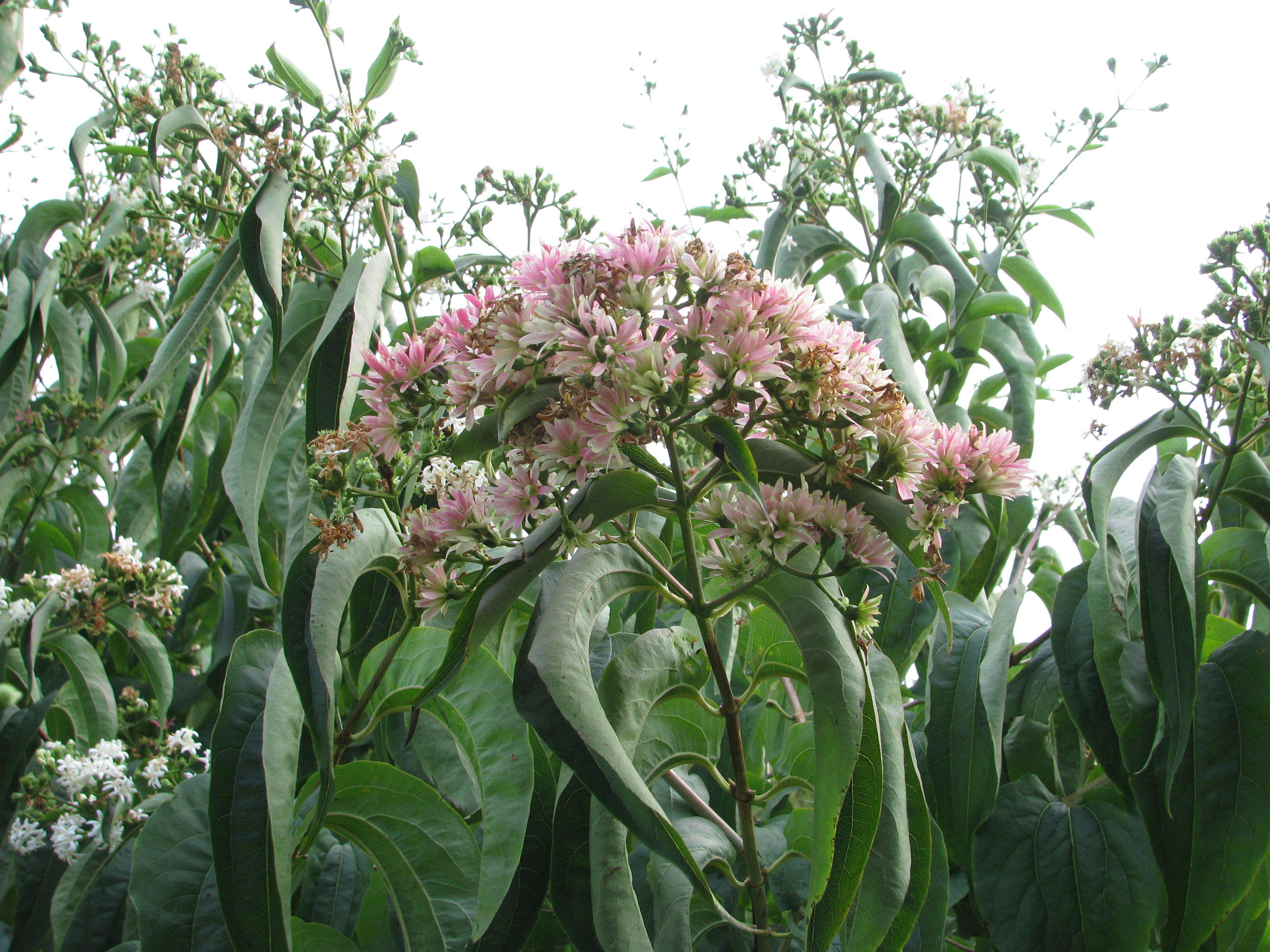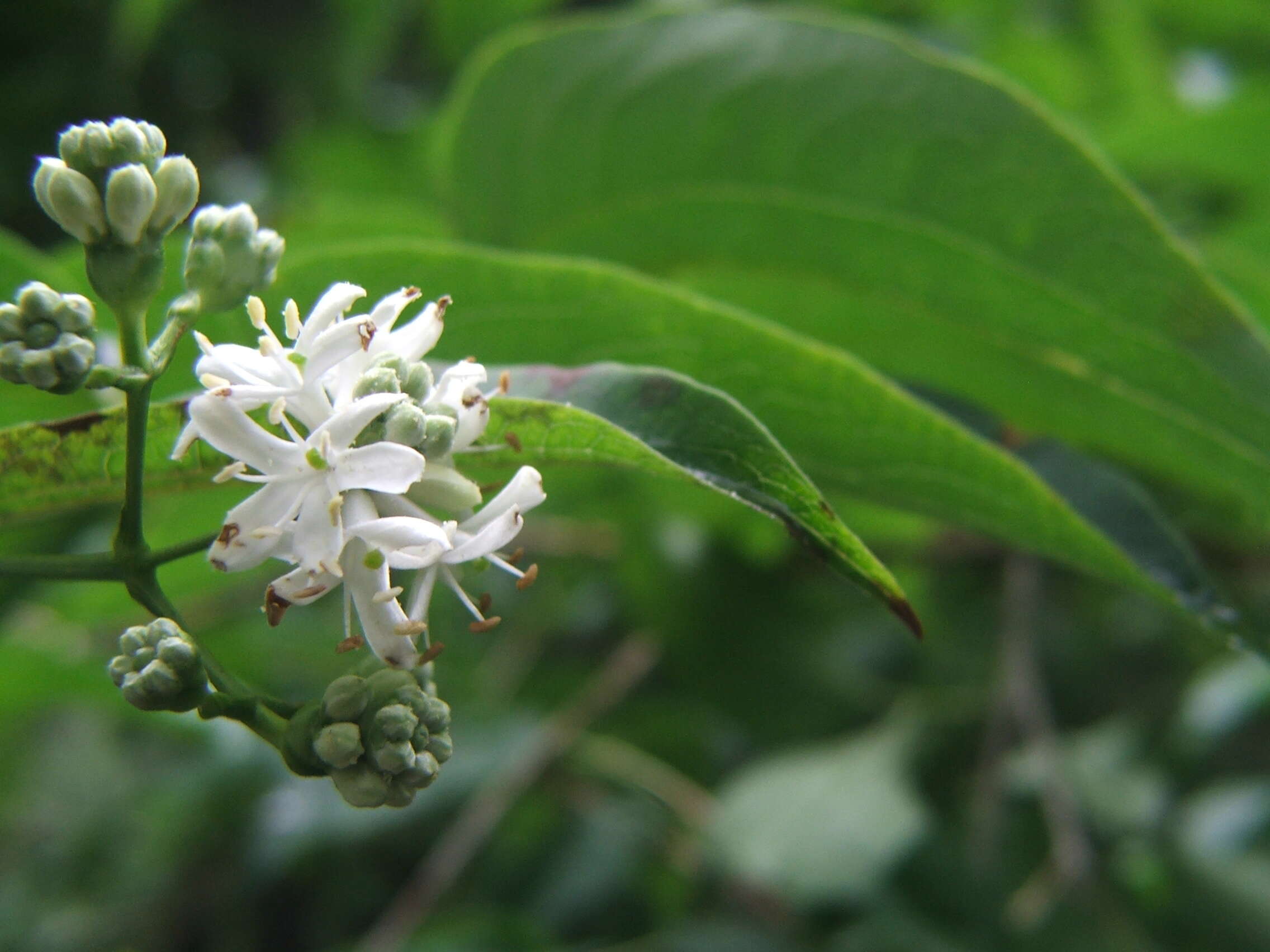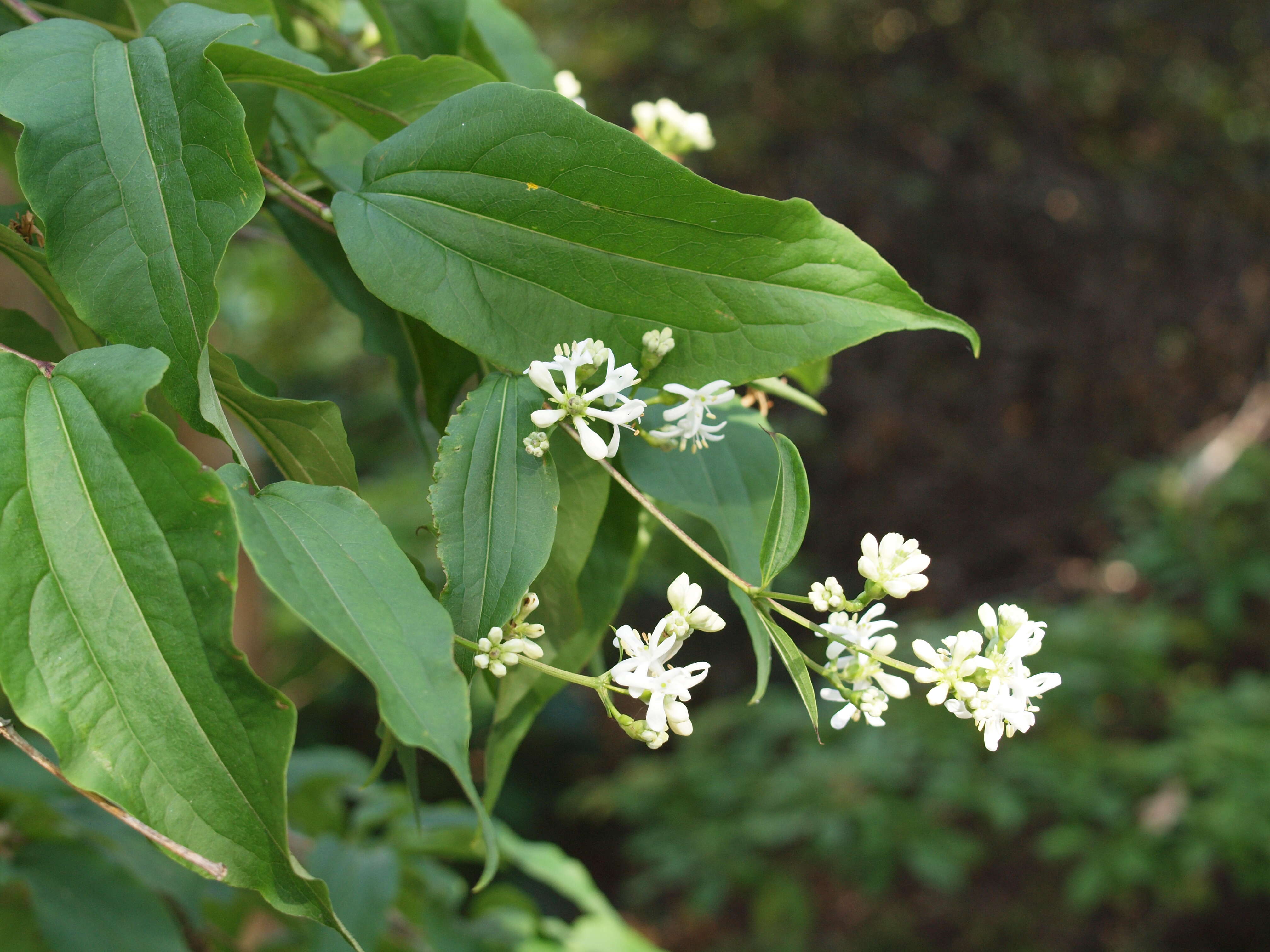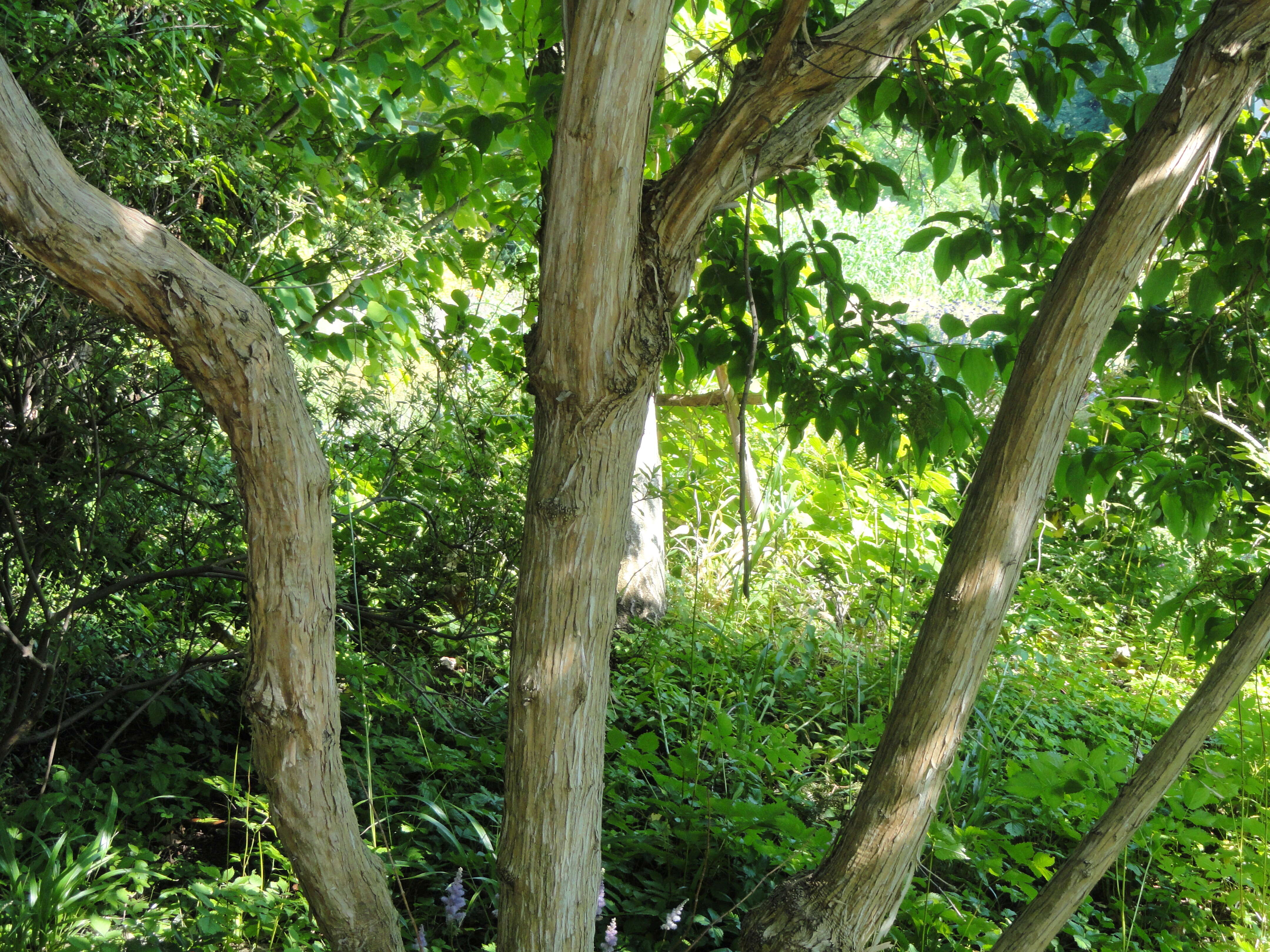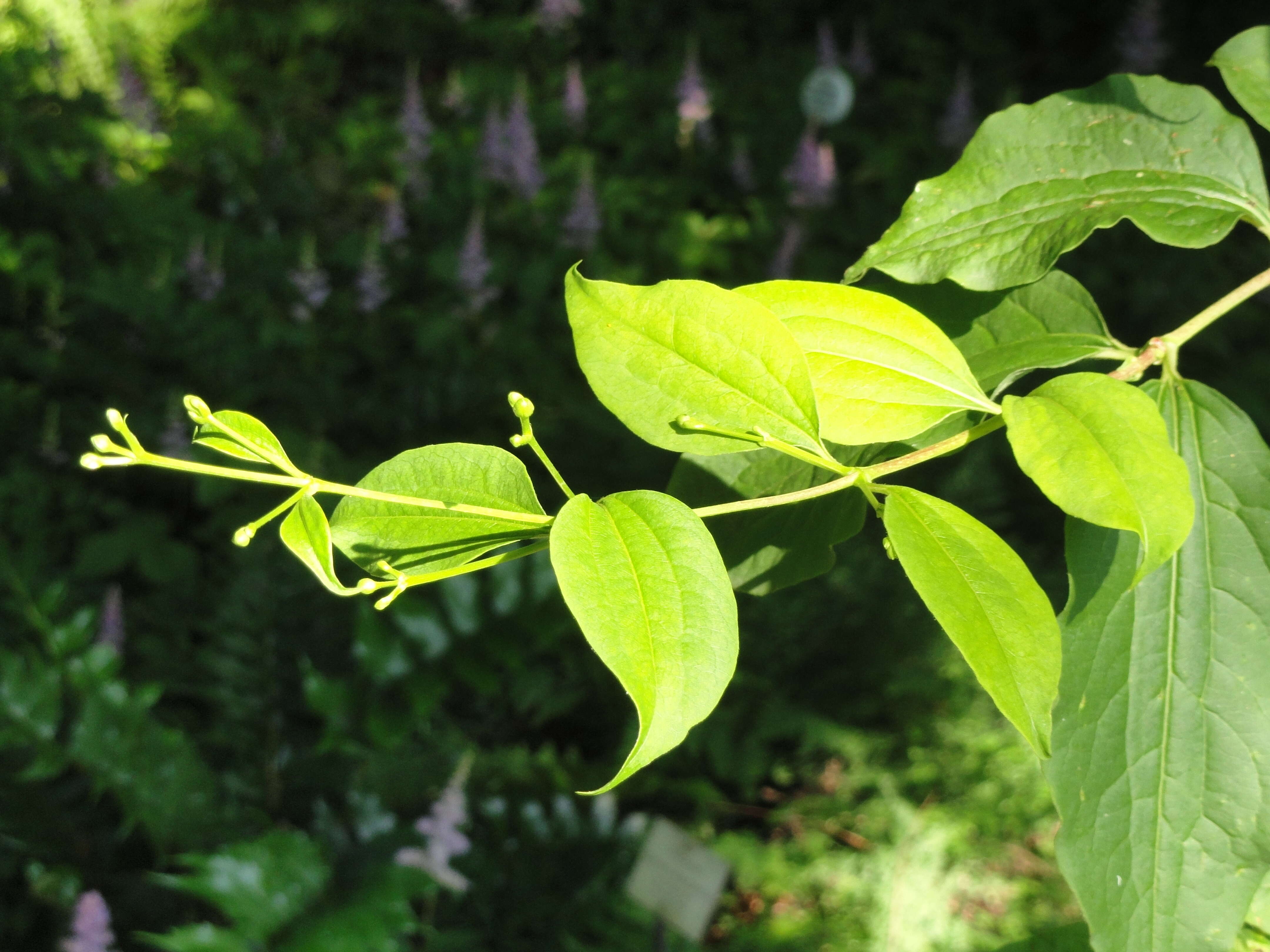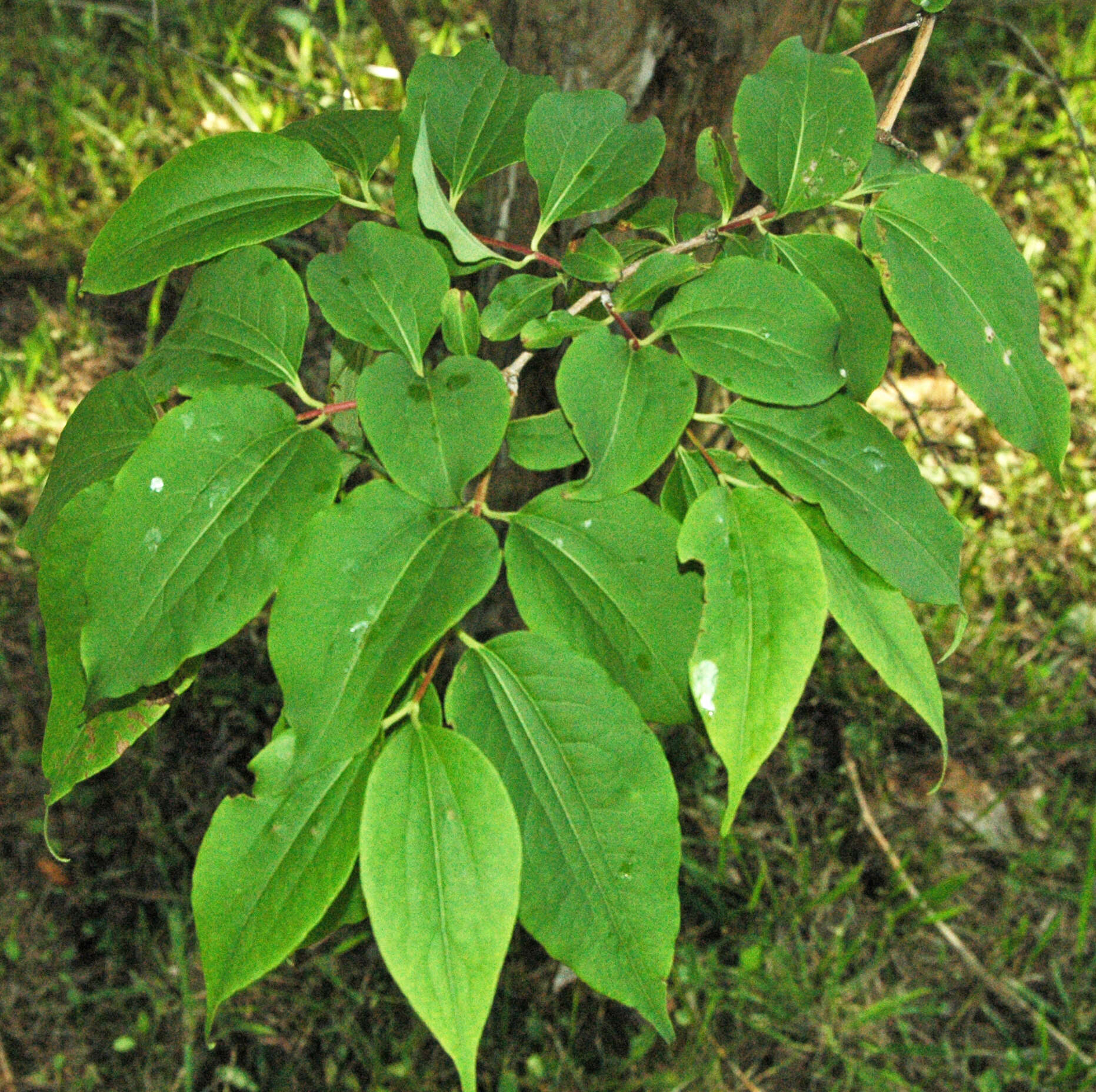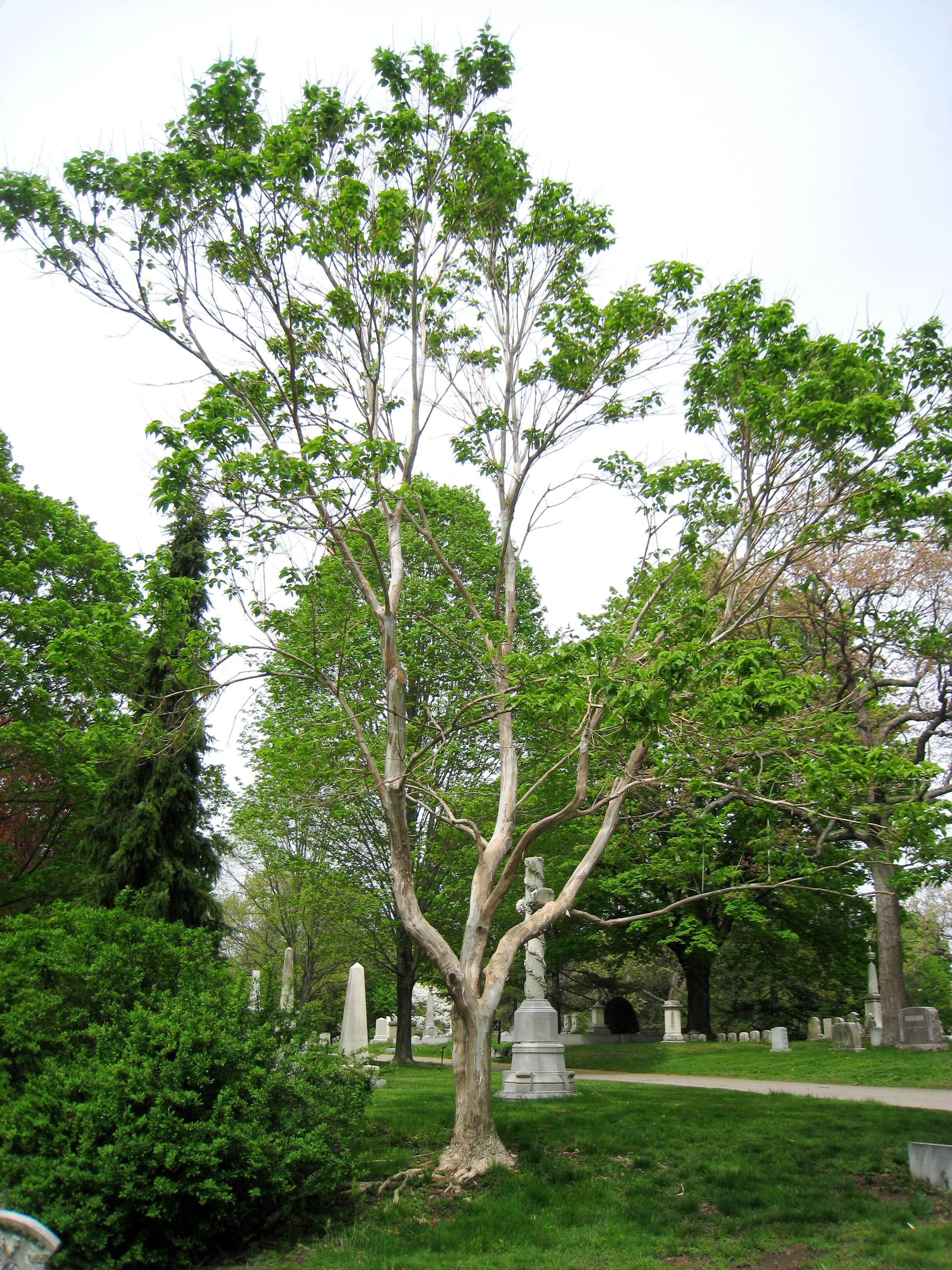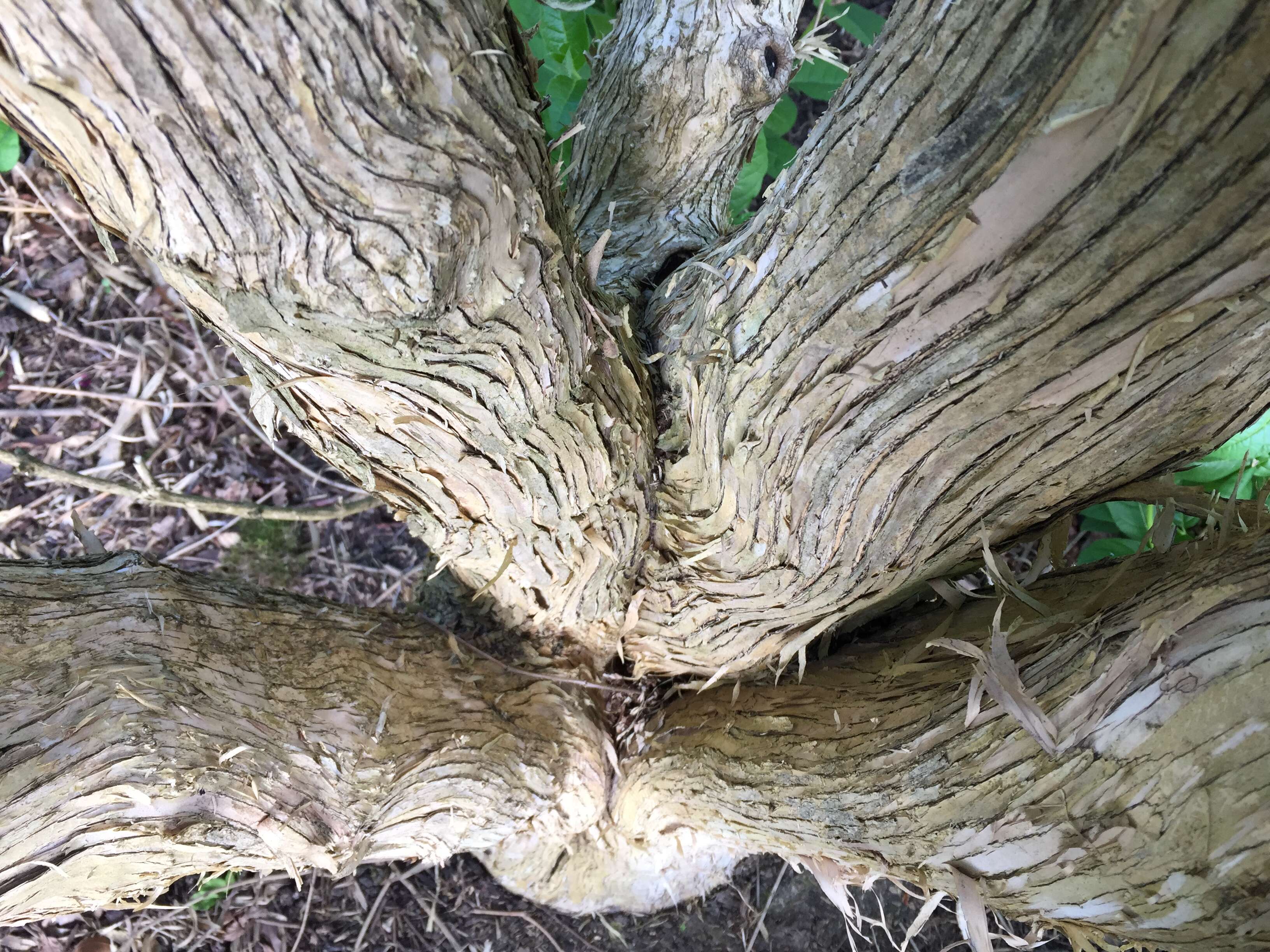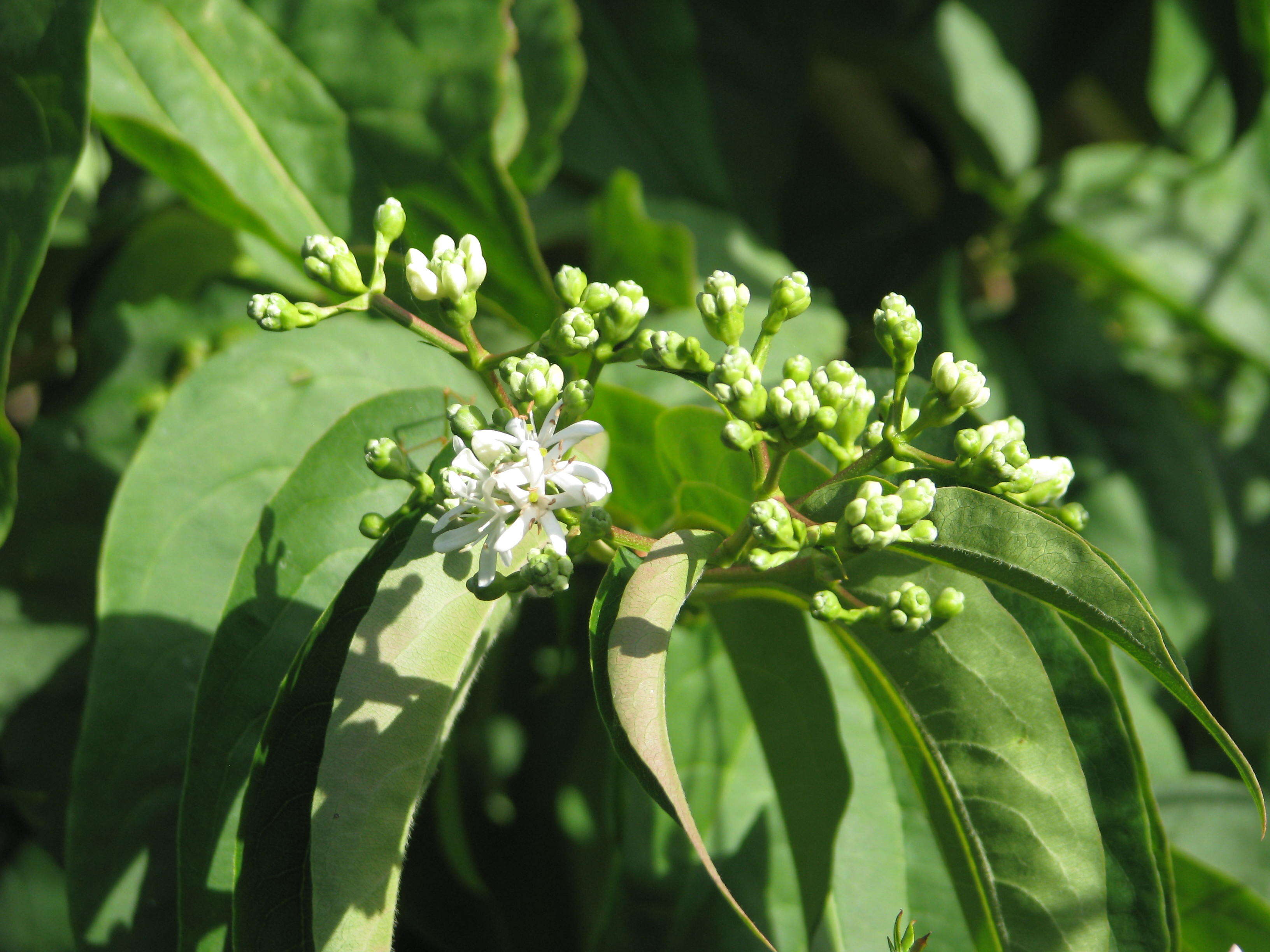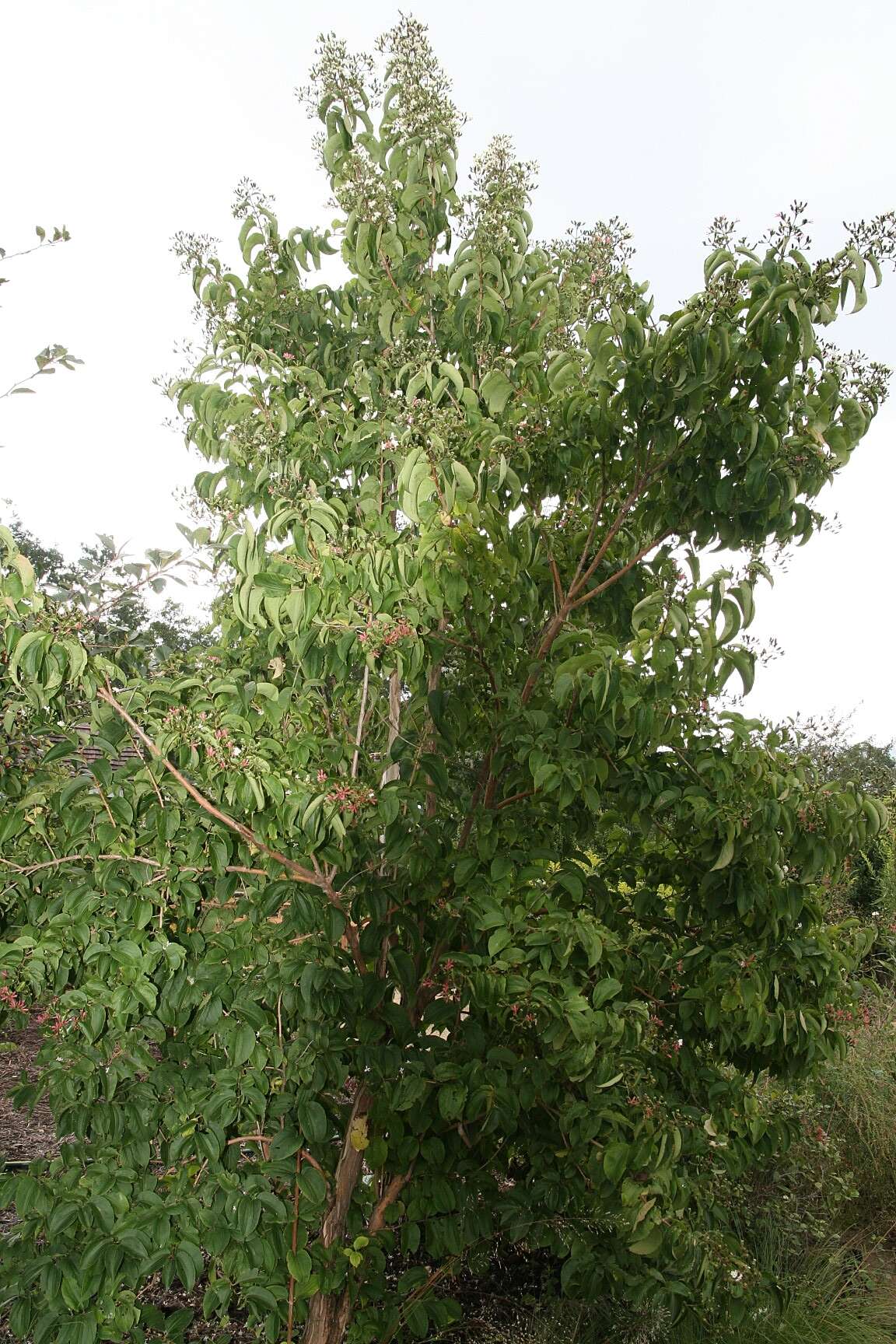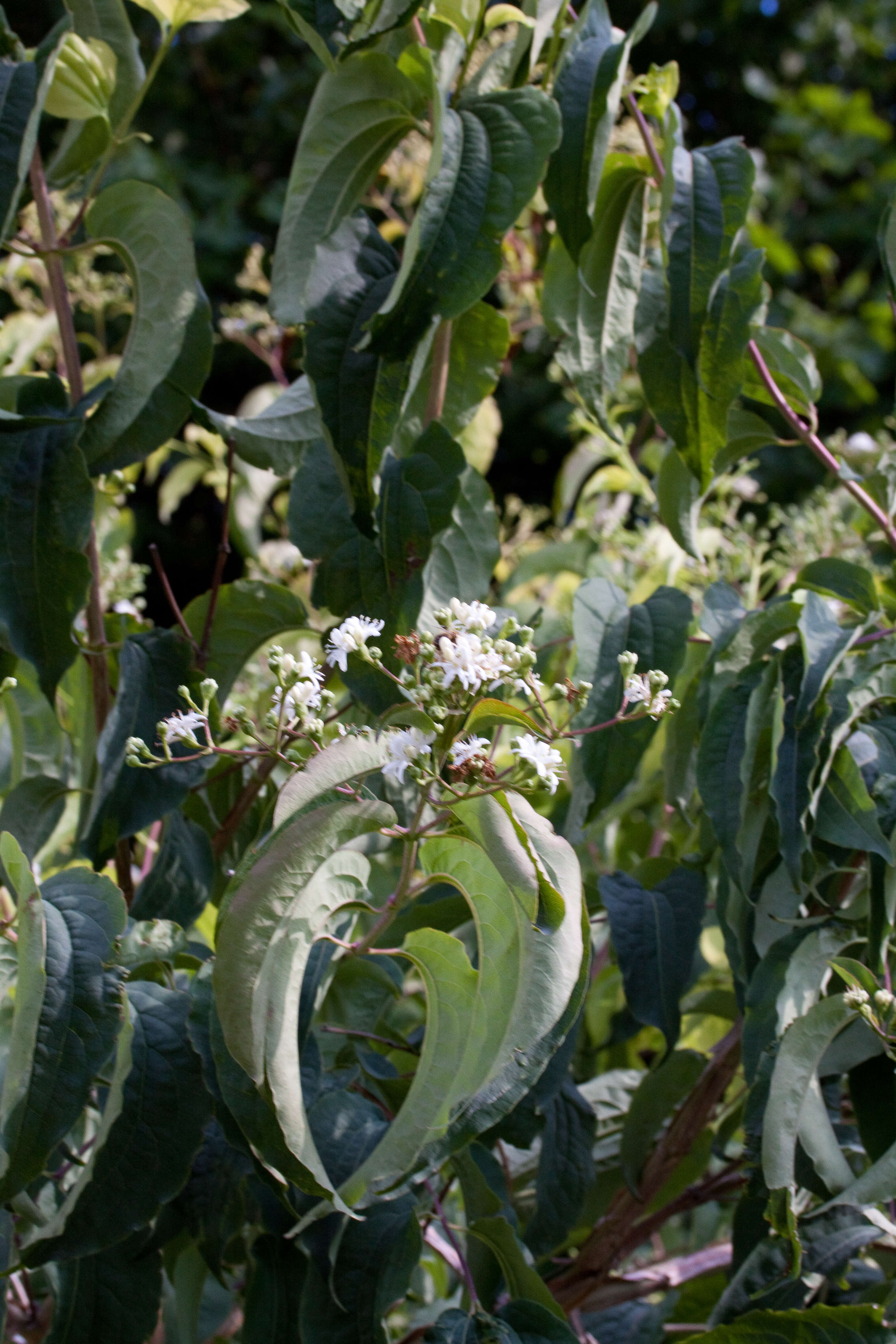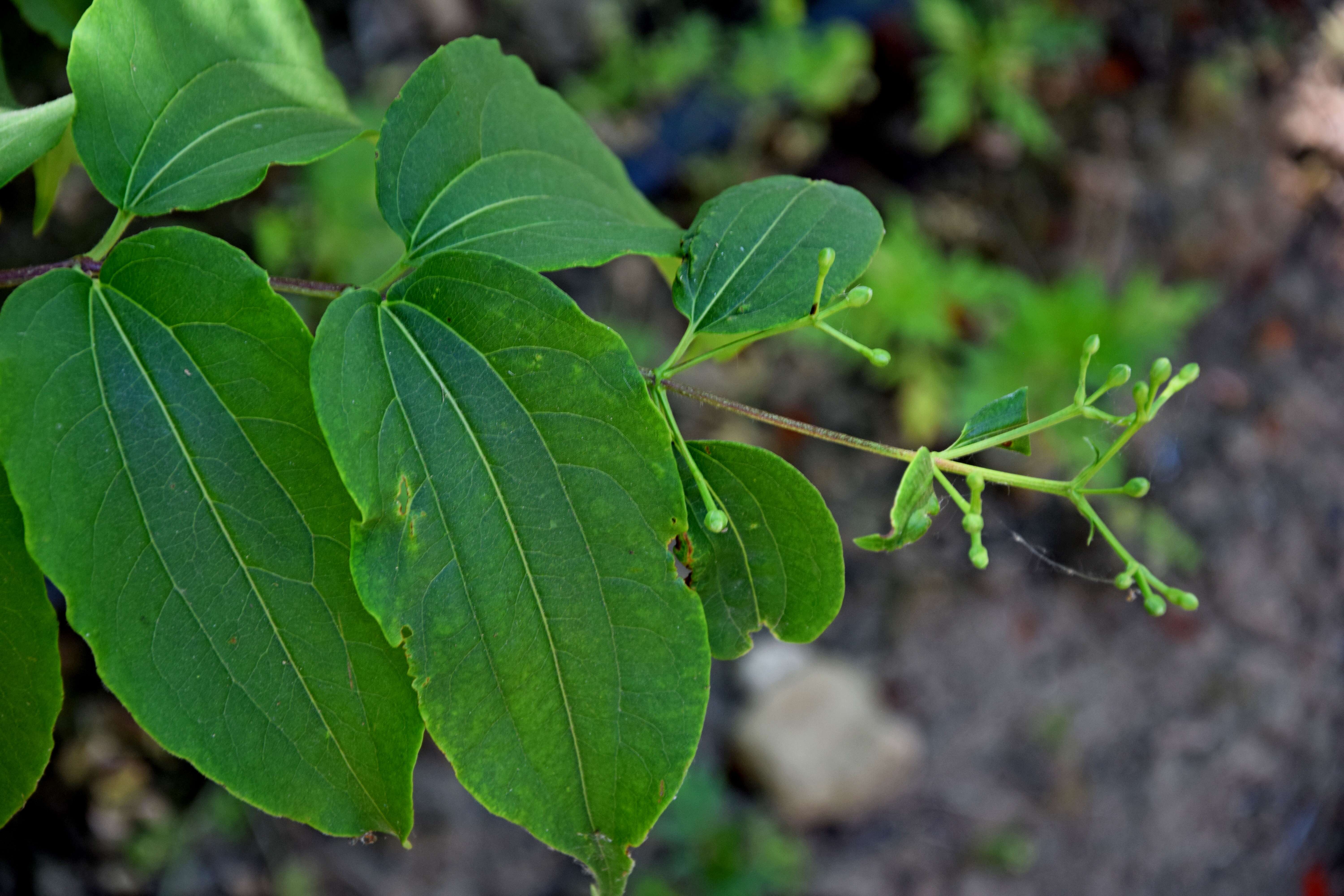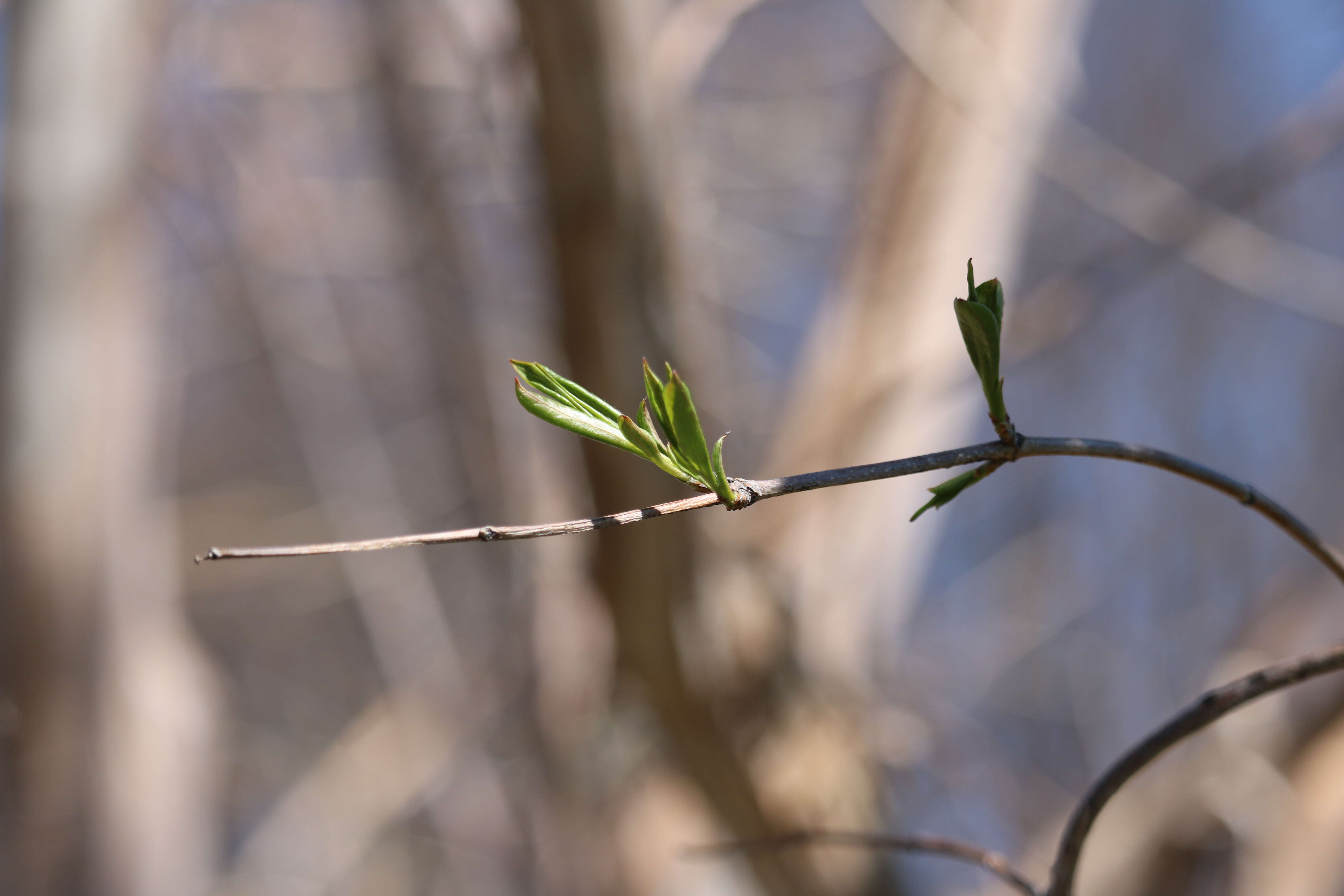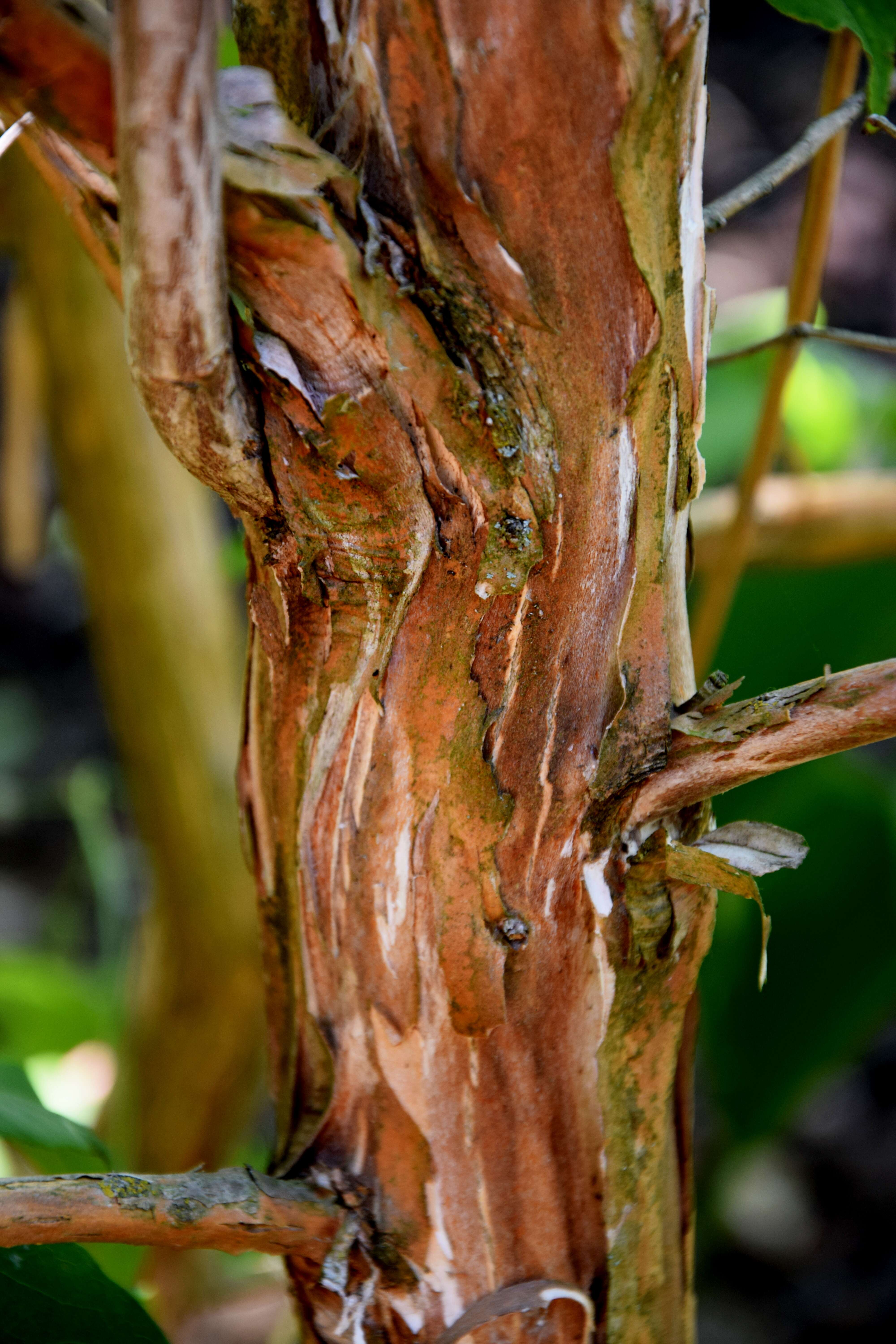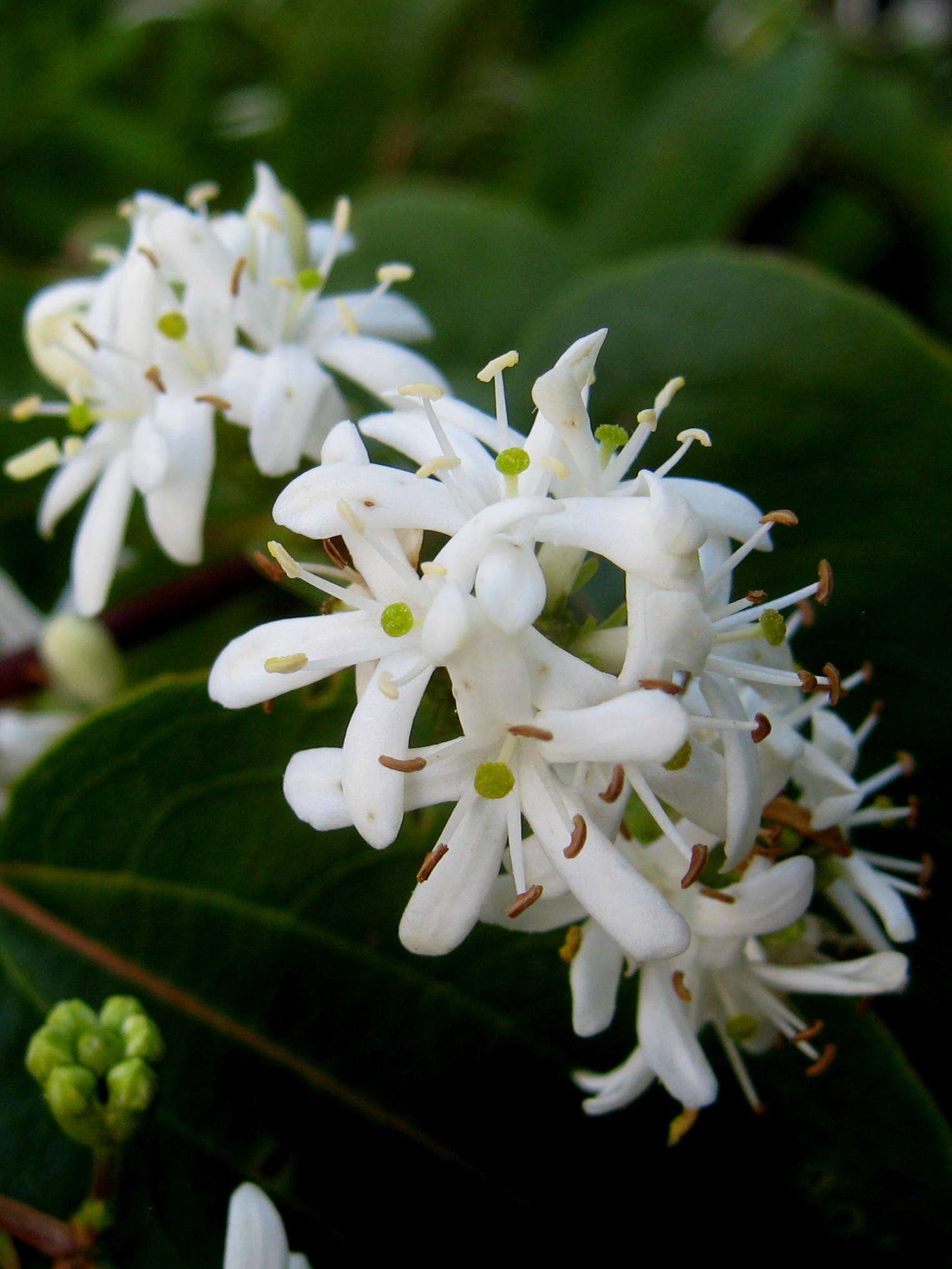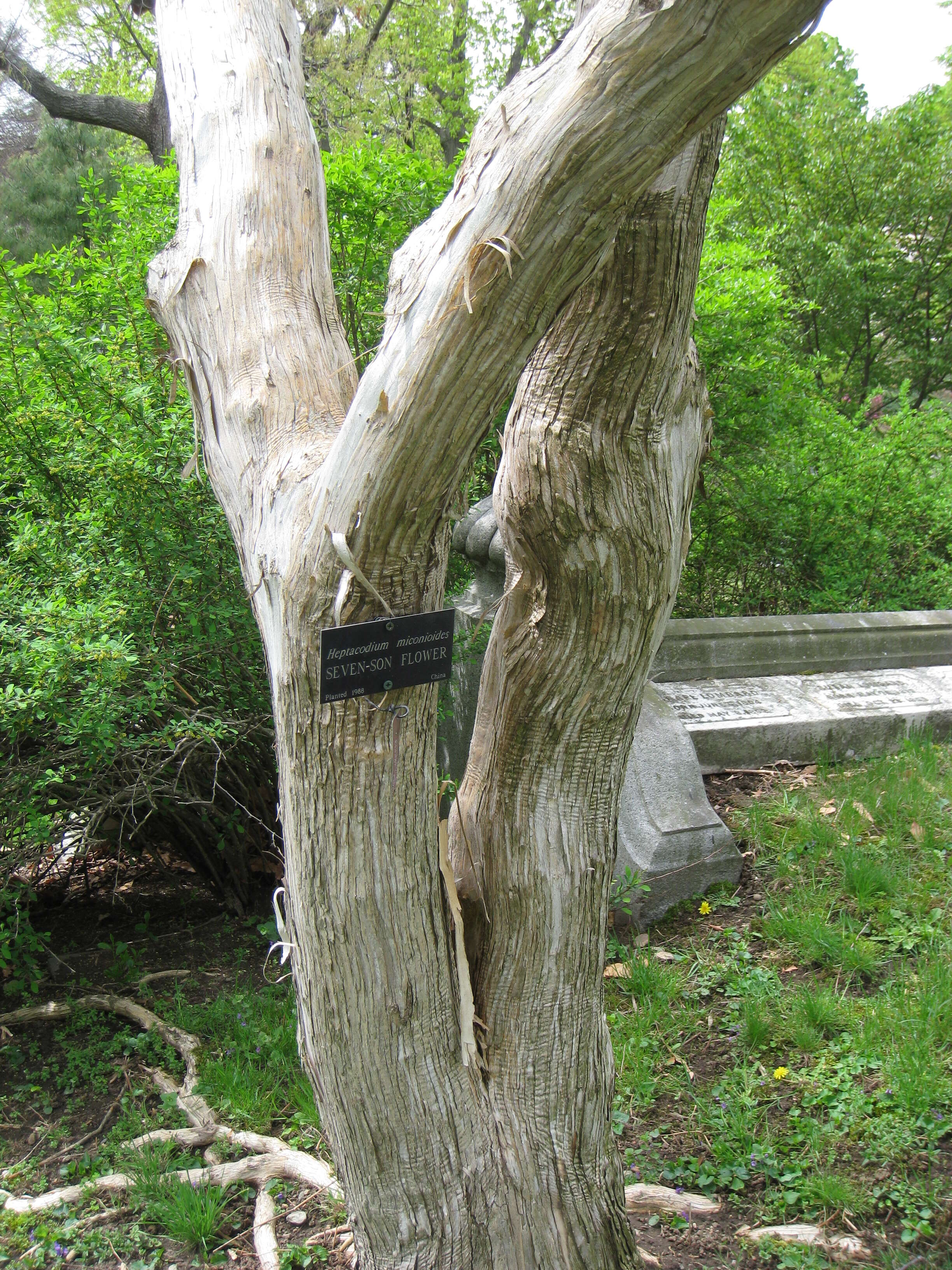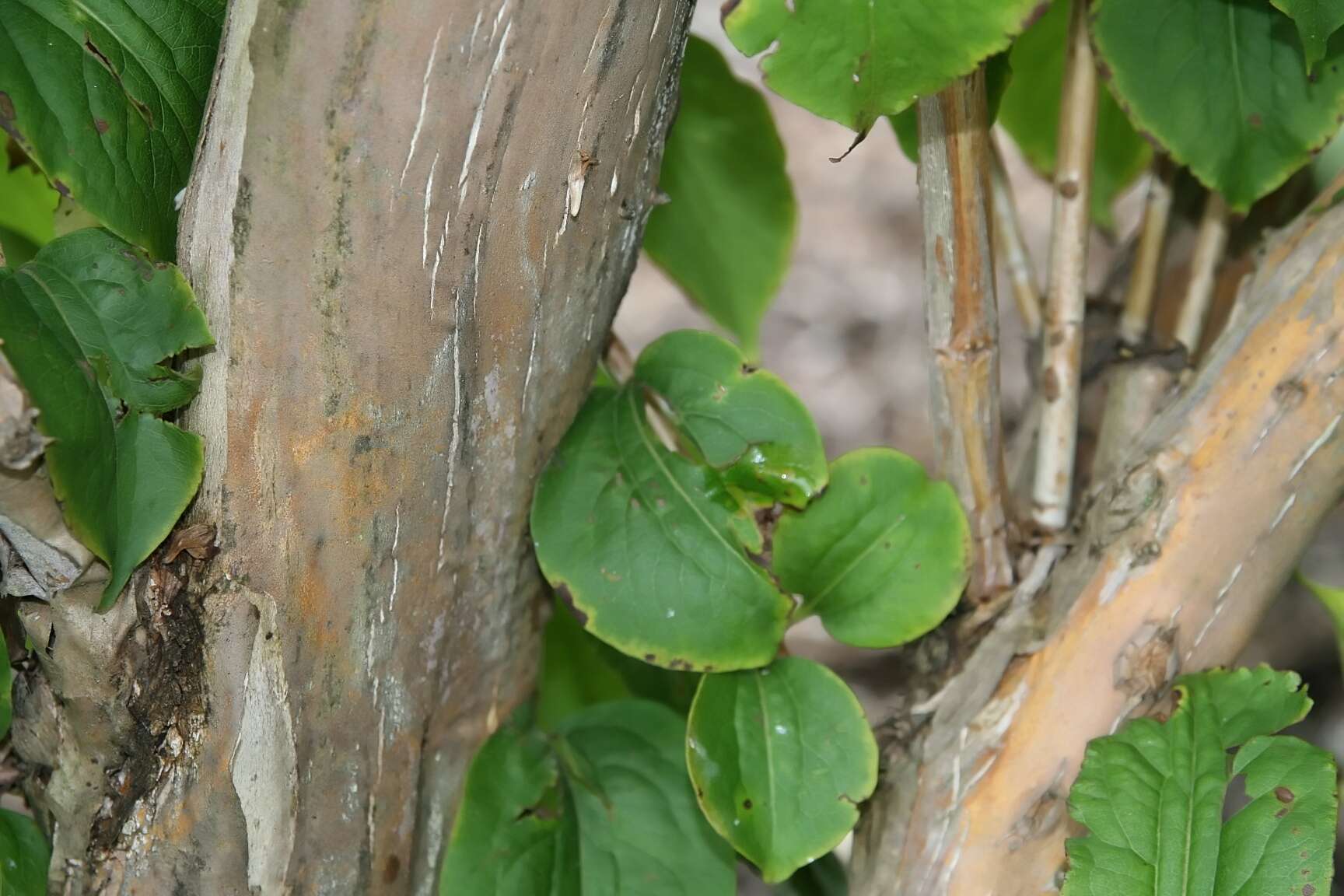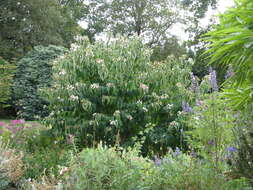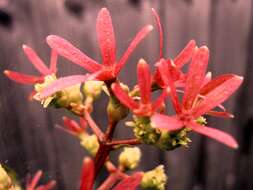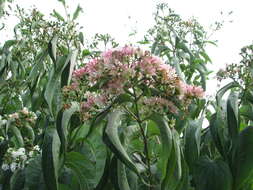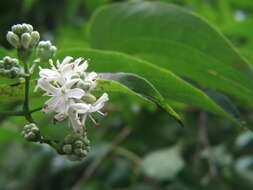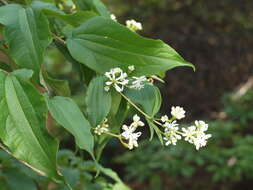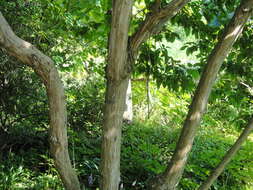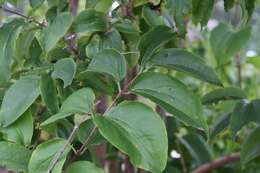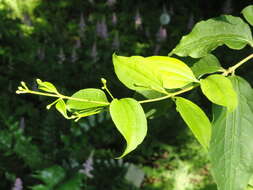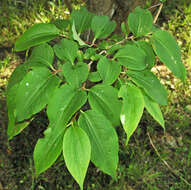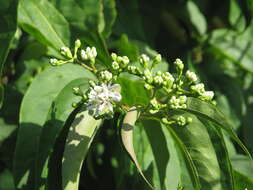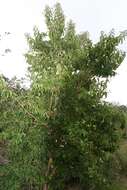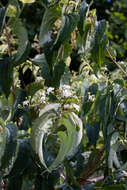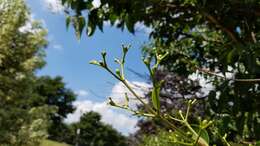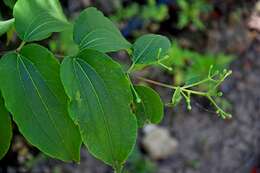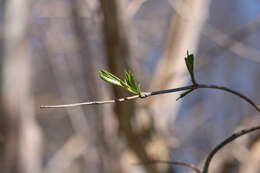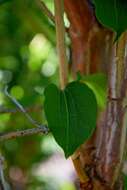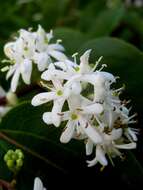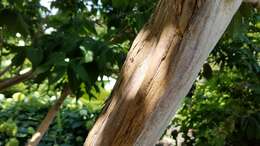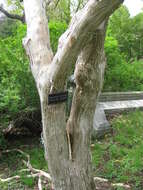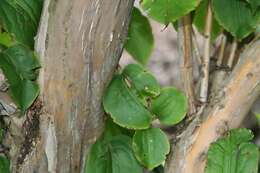Description: English: Heptacodium miconioides Rehder in Sargent, 1916 - "seven son flower" (Dawes Arboretum collection, Heath, Ohio, USA) Plants are multicellular, photosynthesizing eucaryotes. Most species occupy terrestrial environments, but they also occur in freshwater and saltwater aquatic environments. The oldest known land plants in the fossil record are Ordovician to Silurian. Land plant body fossils are known in Silurian sedimentary rocks - they are small and simple plants (e.g., Cooksonia). Fossil root traces in paleosol horizons are known in the Ordovician. During the Devonian, the first trees and forests appeared. Earth's initial forestation event occurred during the Middle to Late Paleozoic. Earth's continents have been partly to mostly covered with forests ever since the Late Devonian. Occasional mass extinction events temporarily removed much of Earth's plant ecosystems - this occurred at the Permian-Triassic boundary (251 million years ago) and the Cretaceous-Tertiary boundary (65 million years ago). The most conspicuous group of living plants is the angiosperms, the flowering plants. They first unambiguously appeared in the fossil record during the Cretaceous. They quickly dominated Earth's terrestrial ecosystems, and have dominated ever since. This domination was due to the evolutionary success of flowers, which are structures that greatly aid angiosperm reproduction. The "seven son flower" is a plant that is only native to a few areas of China. The species has been widely cultivated. Classification: Plantae, Angiospermophyta, Dipsacales, Caprifoliaceae See info. at: en.wikipedia.org/wiki/Heptacodium. Date: 5 July 2008, 18:26:13. Source:
https://www.flickr.com/photos/47445767@N05/51191261448/. Author: James St. John.

